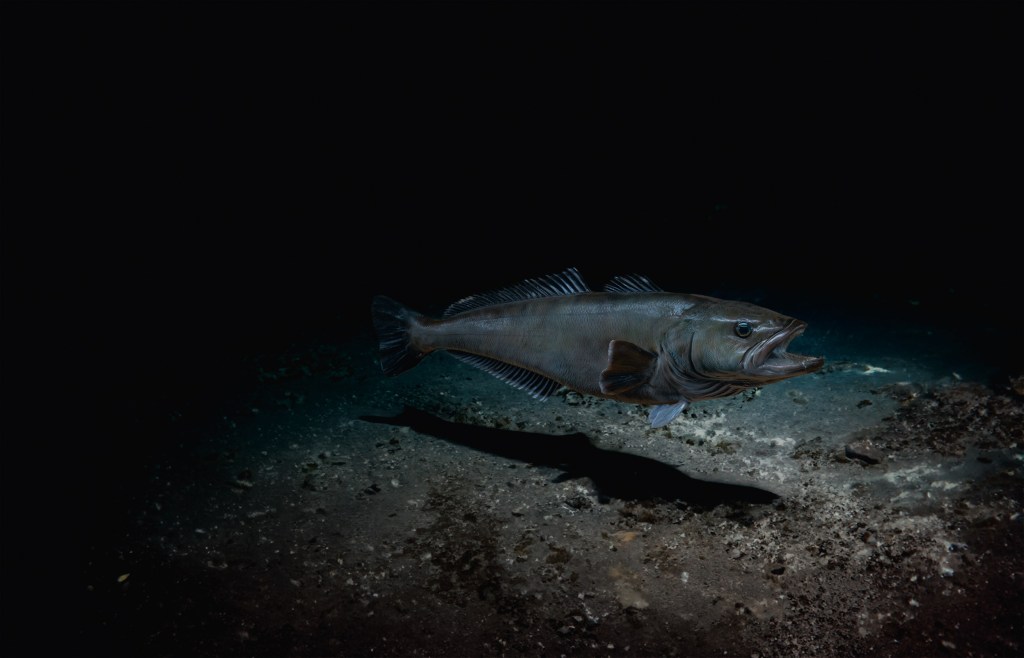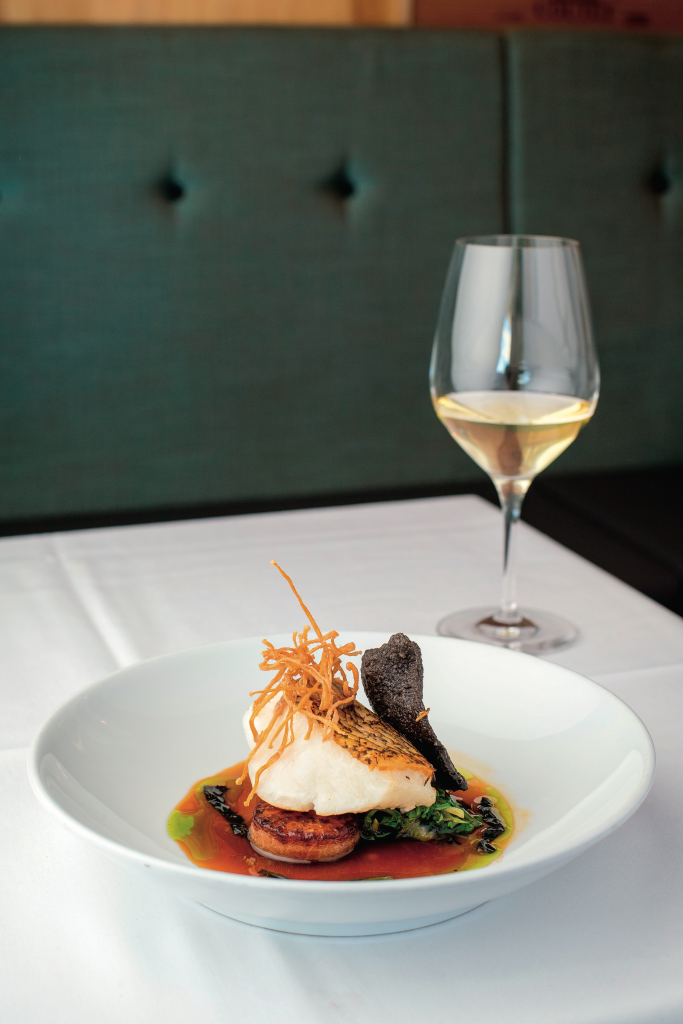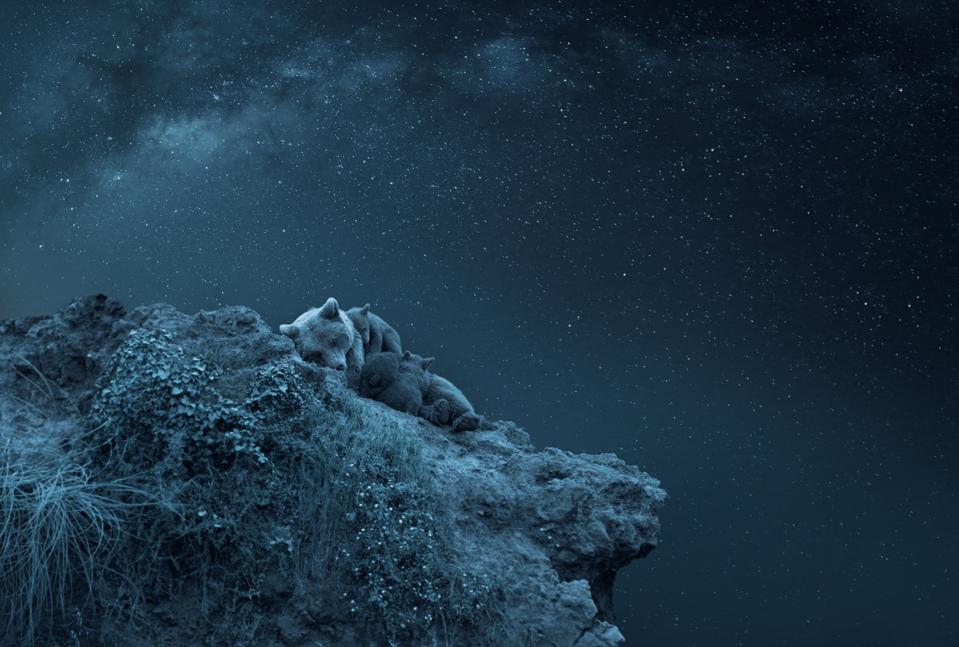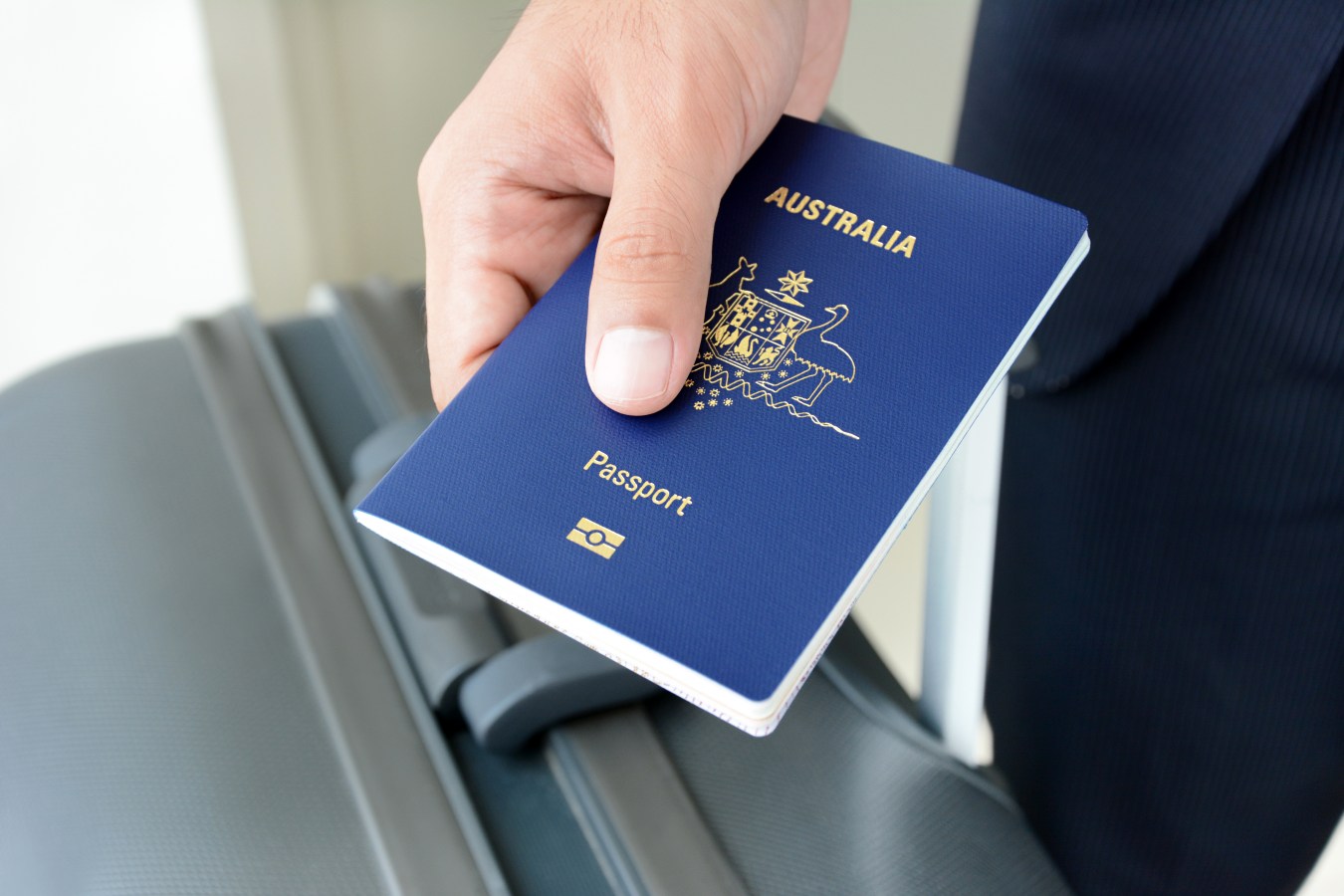In an extraordinary tale of derring-do, Austral CEO David Carter reveals to Forbes Australia’s Stewart Hawkins how the company battled pirates in the sub-Antarctic to build a successful export trade in an evil-looking black fish that’s become the darling of haute-cuisine chefs around the world.

David Carter, Austral Fisheries’ CEO, recalls one of his company’s research boats was deep in Australian waters close to Macquarie Island, about two decades ago, in search of the elusive orange roughy – the go-to seafood dish of many posh restaurants at the time – when they hauled up a “a strange black fish”.
Creepy, this creature was: black scales, a demonic mouth with a dual row of teeth in the upper jaw, spaced, canine-like teeth in the lower jaw – twin, spiky dorsal fins, and a flattened head.
The crew were seriously, hell-and-gone from nowhere.
“Not all treasure is silver and gold, mate.”
Jack Sparrow
Macquarie Island, politically part of Tasmania, lies about 1,500km south of Hobart, halfway between Australia and Antarctica.
At 54 degrees south, it’s a windswept, cold, bleak but beautiful place, with no permanent inhabitants and a UNESCO world heritage listing, partly because it’s “the only place on earth where rocks from the earth’s mantle (6 km below the ocean floor) are being actively exposed above sea-level”.
It’s exactly the kind of place you’d set a creepy-creature-from-the-deep story.
“This black-coloured fish, we weren’t sure about [it at the time],” Carter says. “We’d heard rumours of [it though].”
After a long voyage, the crew eventually sailed back to Hobart, where Austral was in touch with a man from the Antarctic Division called Dick Williams, who confirmed that it was, indeed, a Patagonian toothfish, at that stage, a fairly new phenomenon on the global seafood market which had been selling in the US as Chilean seabass.
Belying its appearance, the creature also happened to be one of the most sought-after fish by international chefs, fetching eye-watering prices on fine-dining menus. Its thick, rich-flavoured white flesh has a very high oil content, which means it retains its moisture when cooked under high heat, making it not only versatile it also delivers that ethereal umami (‘essence of deliciousness’ in Japanese) that characterises the world’s best cuisine.
After that initial research foray, Carter says the company realised that Australia also had a territorial claim to the waters adjacent to Heard and McDonald Islands in the Southern Indian Ocean and toothfish stocks may also be there.
“We’d seen some previous fisheries [and] oceanographic research vessels’ work that had shown the presence of toothfish [there], and some early Russian activity during the 80s in that area and some interesting catch records,” he says.
“We were successful in [getting] another research development permit for that part of the world. [But] that first trip, we got nothing. We spent about a million and a half dollars on fuel, crew and boat running. Barely caught a scale.”
Then, in an extraordinary act of bravado, Carter’s “boss and mentor” at the time – Murray France – decided to go again.
“We rolled the dice, we filled her up with fuel, we put another skipper on,” Carter says.
“We went down there and ran into six illegal fishing vessels pointing to where this fish was abundant. And after we shooed them away with some very assertive boat handling, we had a successful trip. And therein began our unending campaign against illegal fishing in our zone. And that campaign has seen us align neatly with many environmental NGOs that share our views around the evils of illegal fishing.”
Today, the WA-based Austral Fisheries is catching and marketing the toothfish, re-branded as “Glacier 51”. It’s highly profitable and served in some of the world’s top restaurants.
The company is extracting 2,500 tonnes of fish a year, which retails north of $120 a kg. About 90% of the catch is sold outside Australia.
Why?
According to Carter, this is “rare air, ” and the price is above what most Australians will pay. The main customers include the US, China (seasonally), Dubai, Hong Kong, Singapore and Milan. It’s also served outbound on Qantas first-class flights from Sydney and Melbourne.
Carter attests to the profitability of the operation without revealing figures. However, he does maintain there are still considerable risks.
Conservation issues
We need to back up a bit at this point in the tale. There was a problem extracting this fish for commercial consumption in the early days – a big one.
Many people considered the toothfish critically endangered – ergo, the plethora of pirate vessels looking for it.
“We had to overcome the impression that it was like eating Panda bear,” Carter reflects drily, “and that our presence [in those waters] was a desecration of a holy place.”
“There was a lot of pressure on us to withdraw. There was a meeting, and 17 different agencies were represented. And it was at that meeting that we did everything we could to address their many and varied concerns, like the biosecurity questions. Some [species] were sensitive to diseases from brassicas [for example], so we agreed not to throw anything over the side – no galley waste that could wash up on the shore and infect that local flora. There were also concerns about factory waste [and] seabirds. We installed a fish mill plant and, again, retained everything on board, so we weren’t provisioning those bird communities.
“We agreed to a whole raft of measures, including turning lights off on vessels that prevented or reduced our exposure. We then agreed to have all this oversighted. Except for that first discovery trip, every trip we’ve ever done to the sub-Antarctic has had at least one, and most of the time, two, independent observers on board. And through that process, we were able to document, record and better understand the marine systems, firstly the target species and the ecosystems that look after them.”

The Australian Marine Conservation Society’s Adrian Meder says he supports what Austral is doing in the southern waters and doesn’t dispute anything they claim. Still, he does admit the fish has been under threat in the past.
“[Toothfish] are a fairly long-lived and slow-growing fish,” he says. “Those attributes make them vulnerable to overfishing, and that’s certainly happened very seriously in the past. There was rampant illegal fishing.”
Meder’s organisation publishes the GoodFish Sustainable Seafood Guide, an independent guide to the sustainability of seafood options on the Australian market.
He says the organisation addresses many key aspects of environmental sustainability when compiling the guide and that: “the Australian Patagonian toothfishery gets high marks in all those areas. It’s on the green list in our guide for good reason”.
“Austral takes what’s called a fishery observer on every fishing trip. They’re not so much onboard police, more of an onboard scientist that monitors everything and makes sure that any of the impacts of fishing are recorded. [For example] if they catch too many seabirds, that’s it! The season is closed for the year.
“There are explicit triggers. There are very careful controls that, as far as we are concerned, represent global best practices. With that level of scrutiny and protection, it’s unsurprising that the Patagonian toothfish stocks in the area have been able to bounce back.”

A pirate tale
But being sensitive to conservation issues and practising sustainable fishing methods was just the start. Preventing legitimate fishing operations from spoiling the environment was one thing. Preventing pirates from polluting the place and depleting stocks was another.
“Austral takes credit, and I’ll say deservedly, for investing and chasing [pirates] out. They spent their own money raising awareness and obliging the Australian government to support, monitor and protect that resource. And they formed the unlikeliest of alliances with [marine conservation organisation] Sea Shepherd. To both organisations’ credit, they teamed up and started finding and chasing pirate vessels out of town. In fact, in conjunction with them and the Australian Navy, they chased a particular vessel for months all the way up the coast of Africa before they eventually seized the thing. They were able to take out the primary source of all this overfishing.”
Meder does note that despite the successes in Australia’s south, the problem is far from over globally. He says whole fleets of super trawlers have been cleaning out oceans over the past decade, boats, he says, that would never have been built if they were created to fit the actual available fish stock – they just haul everything.
There are also traceability issues.
“It can be very difficult to know that your toothfish is not being swapped out with some pirated rubbish, where the people catching it haven’t paid any of the costs of all of that conservation protection and management but get to fraudulently claim the brand, you’re associating with it. This is a massive issue and one of the most pressing in the management of our fisheries internationally,” he says.
“We had to overcome the impression that it was like eating panda bear”
According to Carter, piracy in the southern oceans was tamed through several phases during the past two decades.
He says the early threat came from South America, generally backed by Spanish boat owners. Although it was a bit ragtag and not particularly well organised, Austral’s early responses were reasonably successful in scaring them off.
“During that period, we were running unarmed patrol vessels down there, which was okay if nobody knew you had no weapons,” Carter says.
“By about 2002 [though], the threat morphed from this band of Spanish [backed] pirates into a much more sophisticated, organised criminal syndicate-style operation backed by Hong Kong-Chinese interests. And at that point, things got deadly serious.”
Carter estimates the pirates took about 2,500 tonnes of toothfish a month – equivalent to Austral’s yearly quota today.
“We successfully delivered on a two-year piece of work to bring the political will to bear on this – with finally a very significant investment in fisheries compliance and [an] agreement to arm civilian vessels, which is quite extraordinary,” he says.
“Because we don’t have a Coast Guard and it was too far and too expensive for the Navy to operate, resourcing a civilian charter vessel with the right personnel and a 50-cal machine gun was a critical turning point in the campaign to protect our borders.”
Fast forward to 2015, and about half a dozen boats were still plying their trade and successfully avoiding detection and capture.
Carter says they got to know Jeff Hansen, the managing director of Sea Shepherd, around that time. Austral had worked hard to convince Hanson that it knew a lot about these oceans and had a strong track record fishing there.

“And that trust, dare I say friendship, developed, and we were able to tell him what we knew about what was going on,” Carter says.
“We thought the chance of finding one of these [pirate] boats was remote, given the vastness of the area. But to my surprise, within a couple of weeks to the south of Heard Island, they discovered a vessel called the Thunder. Their vessel, the Bob Barker, then began a 110-day pursuit of this boat from the bottom of Heard Island through to the west coast of Africa.
“But at the same time, we were mobilising a boat we’d bought in Norway to come to the Indian Ocean. And she was wandering down the west coast of Africa about the same time as the Bob Barker and the Thunder were wandering up. I called Jeff Hansen and said, ‘Jeff, how would you feel about a little on-water support from the fishing industry?’ And without hesitation, he said, ‘Hell yes.’ I said, “We don’t have a lot of time, haven’t got a lot of fuel, frankly, but happy to provide some sort of symbolic support.’ I then had to ring our Japanese partners and tell them we were planning a joint operation with Sea Shepherd.
“And, of course, you’re familiar with the love affair that’s Sea Shepherd and Japan,” Carter adds wryly.
“To their great credit, they trusted me with that little play,” he continues.
“And so [at] sunup, the skipper of the Thunder woke up to our boat, the Bob Barker, and serendipitously another Sea Shepherd boat that had arrived at the same time. And within three days of that encounter, [the skipper of the Thunder] scuttled his own vessel, called a mayday, and abandoned ship, hoping to bury the evidence in the abyss.
“And just as he got off the boat thinking it was all lost, a Sea Shepherd contingent leapt on board the other side and used those last few minutes to gather evidence that was critical in the final conviction – that included notebooks, charts, computers, and importantly a sample of the fish. We still have a very solid relationship with Sea Shepherd.”
The stunned mullet
From the front tables at The Stunned Mullet restaurant in NSW’s picturesque Port Macquarie on the mid-north coast, you can see the Pacific Ocean, and on the windy, stormy day we went to lunch, you could smell the salt spray.
It’s a billion miles from the sub-Antarctic. Still, it’s one of the select establishments in Australia that has the Glacier 51 (aka the Patagonian toothfish) as a signature dish on its menu.
The restaurant has been “hatted” in the Sydney Morning Herald’s Good Food Guide for the better part of a decade, and Lou Perri, the restaurant’s Canadian-born owner, says his was one of the first restaurants to “take [the toothfish] on board” in Australia.
The restaurant’s take on the toothfish dish (which has remained pretty much unchanged for at least eight years, according to Perri) has a shitake broth at the base with a cabbage and daikon “nest” infused with shallot and butter and caramelised to bring out the “nuttiness”.

“When you’re onto something, just run with it,” he says.
And I concur! It was delicious – Japanese-inspired with crispy skin, silky flesh, and a beautiful combination of salty and earthy flavours. It was the first time I had eaten toothfish since I was on assignment in Seoul more than a decade ago, where it was served flash-fried with a light chilli dressing (which at the time absolutely blew me away). And the local version lived up to expectations. Even my (initially) cynical dining companion, Pippa, was won over despite her not being a great seafood fan – “a well-rounded pleasant, savoury taste, flattered by the sauce… a wow dish!” she opined.
Perri’s advice, though, if you’re going to “try this at home”, is to cook it simply with miso, shiitake, and a bit of sugar. Sounds divine!
The author dined anonymously at The Stunned Mullet.
Forbes Australia Issue 8 is out now. Tap here to secure your copy.


